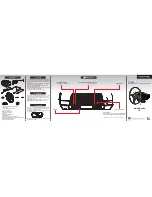
Commissioning
Manual_Grid_Power_FNC_en_V3_0
37
7. Thoroughly remove any contamination on the battery system with a soft, damp cloth with
water.
8. Refill the electrolyte level of each grid|power FNC
®
cell with electrolyte to maximum.
9. Place the (vent/VR) plug vertically and insert it carefully to each FNC
®
cell.
10. Keep a log of your actions, see
13.1 Commissioning Record on page 54.
9.3.
Commissioning Filled and Charged (FC) FNC
®
Cells
Note
If the initial commissioning is within three months from the manufacturing date, the instructions in
this chapter are not mandatory.
The manufacturing date of the grid|power FNC
®
cells is stamped on the top of each battery cell.
Each cell has a 9-digit cell code on top of the cell lid. The last four digits indicate the week and
year of production.
Example:
xxxxx2610 => production week 26; Production year 2010
DANGER!
Danger of explosion due to formation of oxyhydrogen gas!
When the cells are charged, water is decomposed and a hydrogen-oxygen-gas mixture
(oxyhydrogen gas) is formed, which readily explodes with low energy input.
Keep any ignition source away from the battery system:
Open flames or fire
Smoking
Glowing embers
Flying sparks during grinding work
Electrical sparks caused by switches or fuses
Hot surfaces with temperature above 300°C
Electrostatic discharges
Work with electrically insulated tools that do not create sparks. Ground yourself when working
directly on the battery system.
Make sure that there is adequate ventilation in accordance with DIN EN IEC 62485-2, so that the
potential explosive gas mixture is discharged.
1. Measure the voltages of the individual cells using a digital multimeter and note the
values in the commissioning report.
The open circuit voltage of a fully charged, non-
defective cell at 20 °C must be ≥1.3 V.
















































